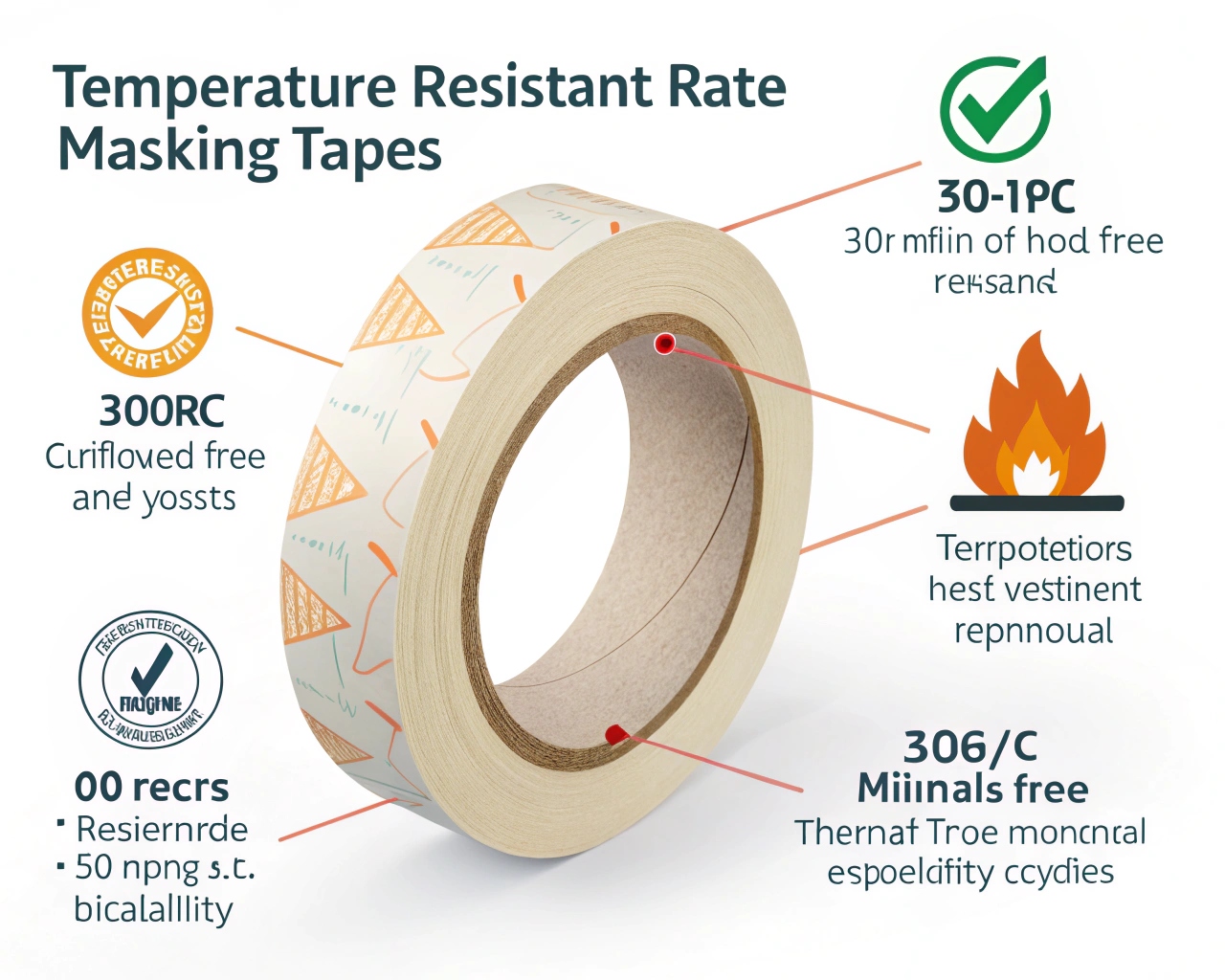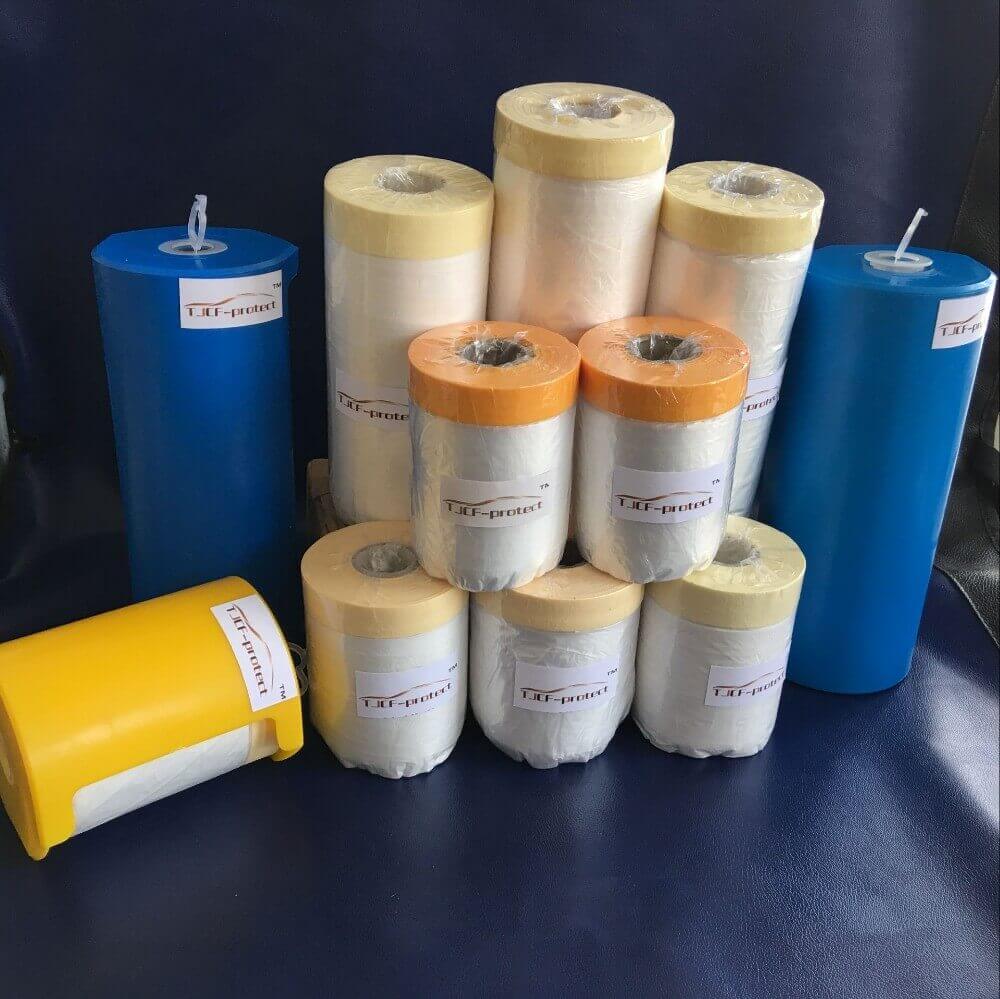Imagine watching your paint job blister because masking tape failed mid-bake. We make tapes that survive ovens hotter than boiling oil. Don’t settle for shortcuts.
Automotive masking tape withstands 200°C heat through specialized materials like polyimide films and silicone adhesives that maintain adhesion under extreme thermal stress – outperforming standard tapes by 100°C.
When I first saw tape lifting during powder coating, I knew there had to be a better solution. Let me show you why heat resistance defines true quality in automotive applications.
How much heat can masking tape handle?
Standard painter’s tape melts while ours keeps gripping. Think of engine bays versus door handles – temperature demands vary wildly across vehicles.
Automotive-grade masking tape handles sustained 200°C exposure, with short-term peaks up to 230°C. Standard household tapes fail between 80-150°C due to inferior adhesives and backing materials.

Three factors determine thermal performance1:
| Material | Standard Tape | Industrial Tape |
|---|---|---|
| Backing | Cheap plastics | Polyimide film |
| Adhesive | Rubber-based | Silicone hybrid |
| Temperature Range | 80-150°C | 150-230°C |
Last year, a client tried saving $0.50/roll importing "high-temp" tape. During engine bay masking tests, their supplier’s adhesive liquefied at 140°C – the exact temperature our baseline product handles effortlessly.
What tape can withstand the most heat?
Not all films survive trial by fire. I’ve watched no-name tapes char while ours emerge intact – blackened but still bonded.
Polyimide-backed silicone adhesive tapes currently lead in heat resistance, enduring 230°C continuous exposure. Fiberglass-reinforced variants add tear resistance for high-stress applications.
For extreme environments:
| Application | Best Tape Type | Key Features |
|---|---|---|
| Exhaust masking | Double-layered fiberglass2 | 250°C peak tolerance |
| E-coating | Polyimide with release liner3 | 230°C sustained |
| Welding splatter | Aluminum-foil composite4 | Reflective surface |
Our thermal testing lab runs 24/7 validating claims. Most manufacturers only test new rolls – we age samples for 24h at 200°C before adhesion testing. That’s why global OEMs specify our tapes.
What is the temperature resistant masking tape?
Temperature-rated tape shouldn’t be guessing game. Remember when blue tape meant quality? Now it indicates bargain-basement supplies.
True temperature-resistant masking tape carries certified ratings (30min@200°C minimum) with residue-free removal after heat exposure. Ours passes even after 50 thermal cycles.

Five essentials for professional tapes:
- Backing stability5 – No shrinking/warping under heat
- Adhesive transition – Maintains tack when heated
- Clean removal6 – Leaves zero residue post-bake
- Chemical resistance7 – Withstands solvents/cleaning agents
- Certification – SAE/AMS standards compliance
Our factory tour shows why competitors can’t match us: dedicated silicone mixing vats, clean rooms for film coating, real-world simulation chambers. We control every molecule.
Conclusion
Automotive masking survives extreme heat through engineered materials and rigorous testing. Choose tapes verified through full thermal cycles – your paint finish depends on it.
-
Understanding thermal performance is crucial for selecting the right materials in high-temperature applications. Explore this link for in-depth insights. ↩
-
Explore the advantages of double-layered fiberglass tape, especially its high-temperature tolerance, crucial for applications like exhaust masking. ↩
-
Learn about polyimide with release liner and its effectiveness in e-coating processes, ensuring quality and durability in extreme conditions. ↩
-
Discover why aluminum-foil composite tape is essential for protecting surfaces from welding splatter, enhancing safety and efficiency. ↩
-
Understanding backing stability is crucial for ensuring your tape performs well under heat, preventing shrinkage or warping. ↩
-
Clean removal is essential to avoid residue that can damage your paint finish, making it a key factor in tape selection. ↩
-
Exploring chemical resistance helps you choose tapes that withstand solvents, ensuring durability and effectiveness in various conditions. ↩



